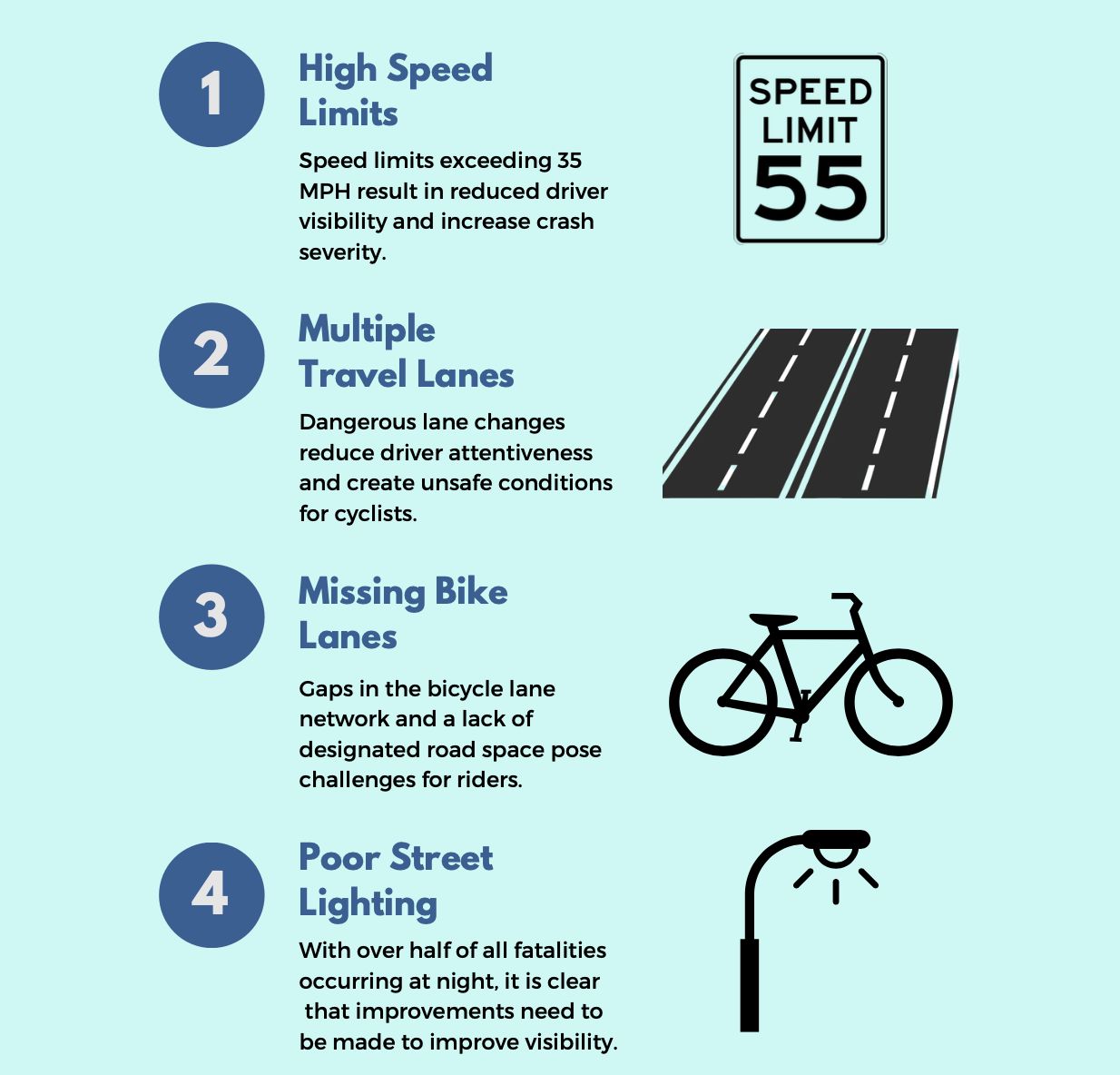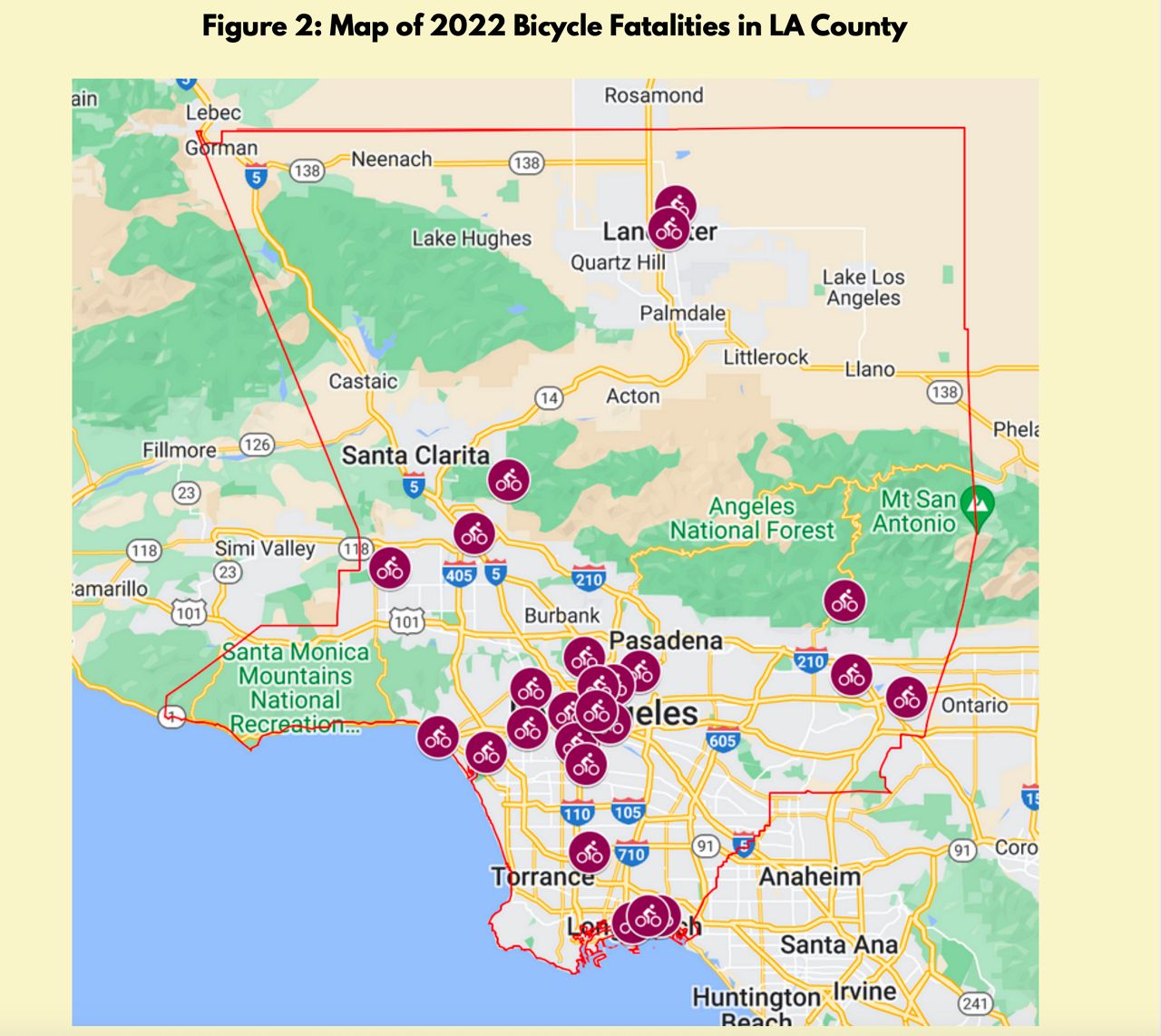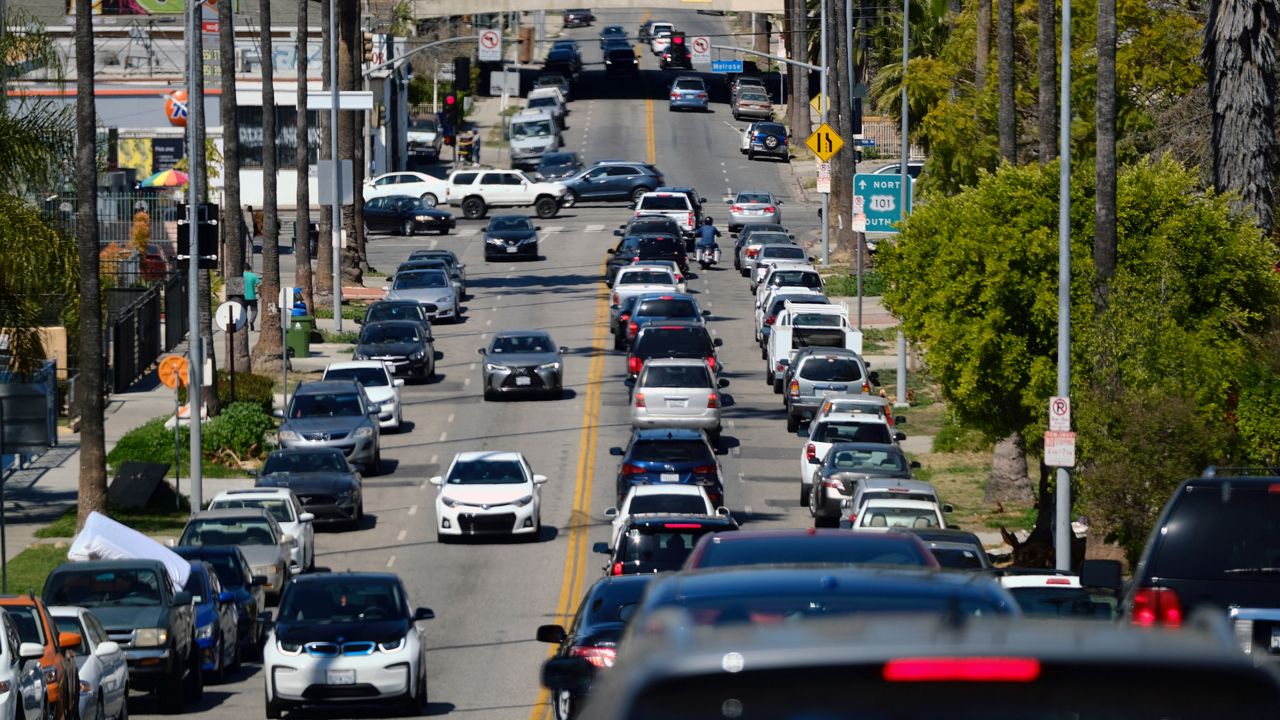LOS ANGELES — When it comes to traffic fatalities, what form of transportation a person is taking makes all the difference. Twenty-four percent more bicyclists died on Los Angeles’ roads in 2022 compared with the year prior, according to Los Angeles Police Department data, but motorist deaths were down.
This week, the nonprofit bicycle advocacy group Bike LA released a report that looks at 26 bicyclist fatalities that took place in LA County in 2022. It found four main factors contributed to bicycle crashes: speeds exceeding 35 miles per hour, multiple travel lanes on roadways, gaps in the bicycle lane network and poor street lighting.
“From our perspective, the built environment must be improved,” Bike LA Executive Director Eli Akira Kaufman told Spectrum News 1. “That is a key that needs to be reimagined and more human centered, but the modalities themselves have some responsibility in making sure they are being conscientious road users.”

The lack of a bike lane was present in 85% of the bicyclist fatalities, the report found. A multi-lane road that implies its bias toward cars was present 77% of the time. According to Bike LA researchers, infrastructure deficiencies are the leading cause of bicyclist deaths, but speed and time of day were also significant factors.
Fifty-four percent of crashes took place at night, the report found, and 38% involved a road with a posted speed limit of 35 miles per hour or faster. Most of the fatal crashes involved at least two of the four factors, the report found.
The chances of a cyclist surviving a run-in with a larger motorized vehicle decrease as road speeds go up. Speeding-involved bicyclist fatalities occur most often on roads with posted speed limits of 35 mph or faster, according to the National Highway Traffic Safety Administration.
The AAA Foundation for Traffic Safety estimates the likelihood of a non-motorist sustaining a serious or fatal injury in a crash at 20 miles per hour is 18%. The likelihood of injury or death increases to 50% at 30 mph and 77% at 40 mph.

The Bike LA report also looked at the distribution of crashes by area. The city of LA accounted for 14 of the 26 fatal crashes, with City Council District 9 (in South LA) and City Council District 14 (in Northeast LA) each contributing three bicyclist fatalities.
The Bike LA report also found that many of the bicyclist fatalities were clustered along major corridors that have already been identified as places where a higher proportion of fatal and serious injuries take place. Two bicyclist fatalities took place within a quarter mile of the intersection of Martin Luther King Jr. Boulevard and Figueroa Street near Exposition Park and the 110 freeway.
The report also noted that three bicyclists have died in recent years on a four-block stretch of Figueroa between 3rd and 7th Streets, parallel to the 110 freeway, with many drivers using that stretch of road for freeway access.
“We need to create space in the street for cyclists and pedestrians, but the speed has to come down,” Kaufman said. “At the end of the day, the ultimate choice is for the person who is behind the wheel about whether they’re going to be a good actor or whether they will break the laws and defy the infrastructure that they’re on.”
By looking at the common characteristics and locations of the collisions, Bike LA hopes to help determine the best places to invest resources to improve infrastructure and reduce traffic fatalities. The group estimates $80 million annually is needed to help the county reduce fatal bicycle crashes by 20%; $50.6 million was committed during the last fiscal year.



